Hallway to the Lower Greenhouse
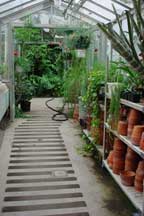
|
Lower Greenhouse Map
Move your cursor over the name of the plant group you want to visit,
then click to be transported down the page!
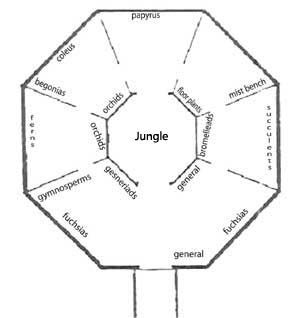
|
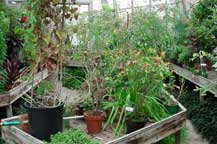
General Collection |
General Collections are used by numerous biology classes
(see list) and tour groups.
The general collection encompases many different groups of plants, including
seedless plants, gymnosperms, and flowering plants. back
to map |

Fuchsias
|
Fuchsias are used in introductory classes year round, and need more than
a 12 hour day length to bloom. This means that the greenhouse has to keep
them under special lights that extends their day length (see photo at left).
back to map |
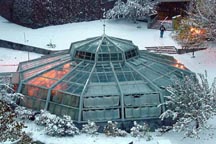 |
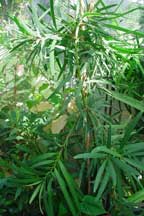
Gymnosperms |
Gymnosperms are plants that produce seeds but are non-flowering.
The most common example of a gymnosperm is a red pine tree, the State Tree
of Minnesota. The picture at left is a pine seedling. back
to map |
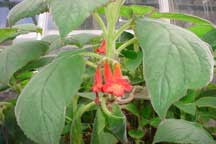
Gesneriads |
Gesneriads are the family most commonly known for containing
African Violets. Gesneriads are great low light house plants. back
to map |
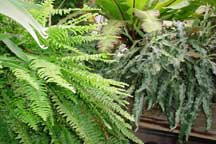
Ferns |
There are a wide variety of ferns in the Lower Greenhouse.
They are in the room that gets the least amount of direct sunlight (the
North room). Look under the leaves to see where the spores are produced
(see picture at right). back to map |
|

Orchids |
The Minnesota State Flower, the Showy Lady Slipper, is an
orchid. Orchids have become very popular house plants due to their exotic
nature. Unfortunately, they can be difficult to maintain. A couple of the
simplest orchids to grow in a house are Dendrobium sp. and Oncidium
sp., both occationally available for cuttings in the spring of the
year. back to map |
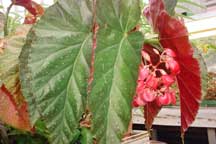
Begonias |
The UMD Greenhouse has a collection of Begonias, which make
good house plants. They can be propogated from leaf cuttings or stem cuttings.
back to map |
 Coleus |
Several classes use large amounts of Coleus plants. Coleus
has interesting patterns of pigmentation in the leaves and is very easy
to grow, although also very susceptible to pests. back
to map |

Papyrus
|
The floor tank contains the traditional Papyrus that was used
for paper-making by the ancient egyptians. In the wild these plants can
grow up to 15 feet tall. In Africa, Hippopotomi hide in the Papyrus. back
to map |
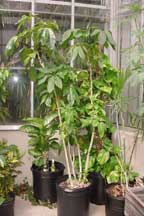
Floor Plants |
These plants are too tall to fit on a bench in the greenhouse.
If you take a cutting of these plants, beware. They grow up. back
to map |

Mist Bench |
The plants under the mist are seedless plants that propogate
by spores and are found in nature along streams and ponds. back
to map |
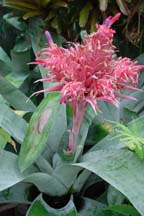
Bromeliads |
The Bromeliad collection at the UMD Greenhouse contains mainly
epiphytic bromeliads, which means that in nature they grow on the limbs
of large trees. The roots don't get watered, but the leaf whorls form a
water reservoir. back to map |
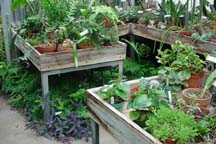
Succulents |
Succulents are the group of plants that
have evolved in desert areas. Their waxy leaves retain water more than
other mesic plants. Succulents have thick leaves and thick stems to control
water loss in arid environments. Succulents come in many interesting forms,
including Budzilla (see picture on right). back
to map |

Jungle |
The center of the Lower Greenhouse has one large soil bed
with a collection of semi-tropical plants that wouldn't be found together
in nature. These include coffee trees, fig trees, Dracaena, palms,
and split-leaf philodendren. back to map |



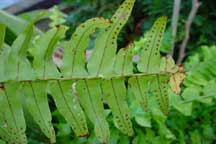







 Coleus
Coleus




